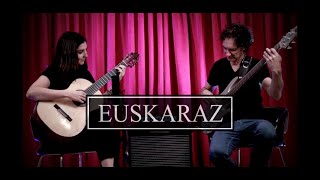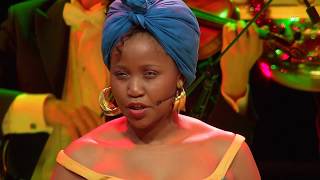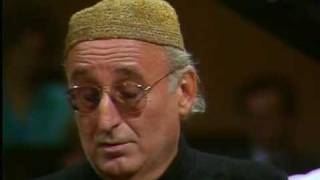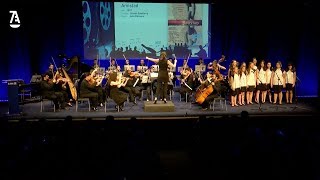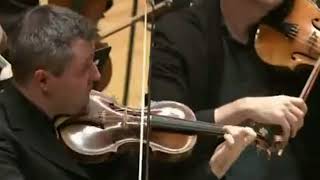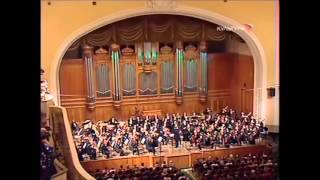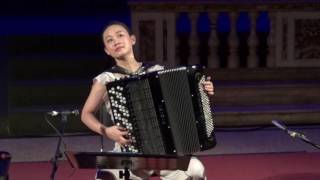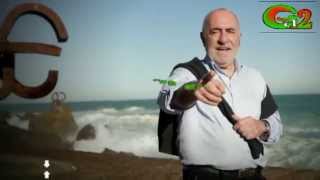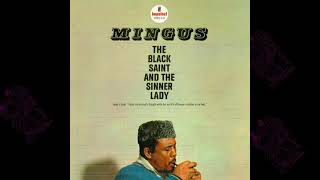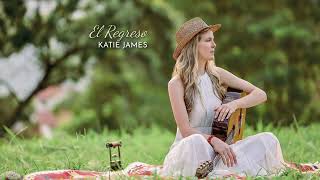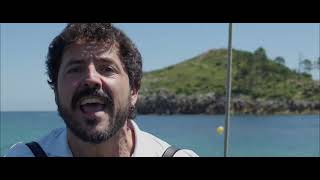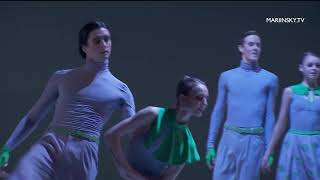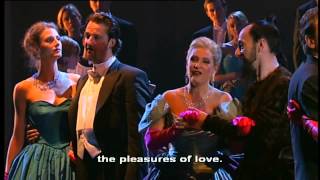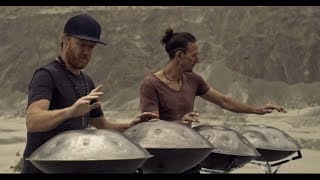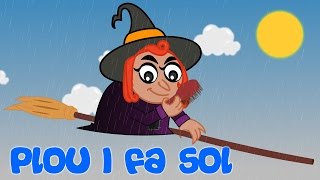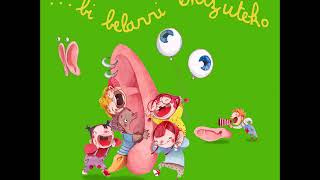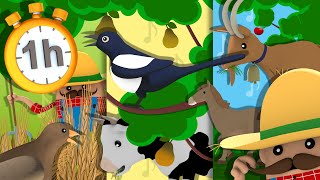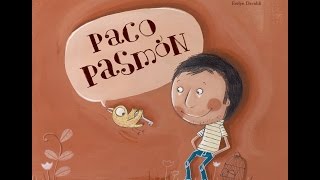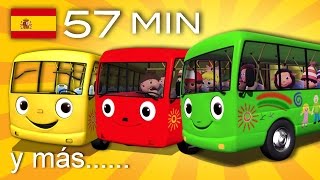On December 3, International Basque Language Day is celebrated.
December 5th commemorates the death of Nelson Mandela.
Recommended music videos for initiation to classical music
Basque , or euskara , is a European, ergative and agglutinative language that is spoken mainly in Euskal Herria . There are also Basque-speaking communities in Europe and America . Basque is official along with Spanish in the Spanish-dominated Basque Country and the Basque-speaking area of Nafarroa/Navarre , while in the French-dominated Basque Country it does not have official status. It is one of the few non- Indo-European languages in Europe and is the only isolated language on the continent. The origin of the Basques is unknown; Although there are multiple hypotheses in this regard, none has been definitively proven. Its possible connection with other languages of prehistoric Europe and its unique characteristics have sparked the interest of linguists and anthropologists around the world.
Euskaraz . The piece we offer today is part of " Euskaraz ", a recording that includes the premiere of pieces composed for guitar by the Grammy and Latin Grammy -winning composer Carlos Fernando López . The music was created for the award-winning Guipuzcoan guitarist Andrea González Caballero . The set of works is a journey through a variety of sounds with the guitar as the common thread. Furthermore, in each of the pieces this solo instrument is surrounded by different musical companies such as the string orchestra or the electric bass.
Nelson Mandela (1918-2013) was a South African lawyer, anti-apartheid activist, politician and philanthropist who presided over his country's government from 1994 to 1999. He was imprisoned for twenty-seven years; International campaigns advocated for his release, and he was released in 1990 amid social upheaval in South Africa . He was the first black president to head the executive branch, and the first elected by universal suffrage in his country. His government dedicated itself to dismantling the social and political structure inherited from apartheid and promoting social reconciliation. As an African nationalist and Marxist, he presided over the African National Congress and at the international level he was secretary general of the Non-Aligned Movement .
André Rieu (1949) is a Dutch violinist, composer and conductor. He has belonged to different orchestras until he founded the Johann Strauss Orkest in 1987, with which he has had a resounding career overflowing with popularity; orchestra that started with 12 musicians and currently has between 80 and 150 members depending on the program it offers; With it he has toured all of Europe, North and South America, Japan and Australia . The music he usually offers is a florilege of classical, popular and folk music and soundtracks, both in live performances and in recordings made in his own studio in Maastricht , with which he has won various gold and platinum records in various countries.
Today we offer this humble tribute to the exceptional Nelson Mandela with the voice of soprano Kimmy Skota accompanied by the Johann Strauss Orchestra conducted by its owner and founder André Rieu .
Wolfgang Amadeus Mozart (1756-1791) is considered one of the three giants of musical composition along with Bach and Beethoven . Child prodigy born in Salzburg , at the age of six he mastered the keyboard and violin and began to compose. His father, Leopold, exhibited him on exhausting tours of different European courts. Prolific composer (more than 600 works written from the time he was five years old until his death) he cultivated all types of musical genres: piano works, chamber music, symphonies, concert works, choral works, operas... each and every one of them, masterpieces of its gender. His operas The Magic Flute, Don Giovanni, Cosí fan Tutte, and The Marriage of Figaro are among the 10 most performed operas in the world. He died in Vienna at the age of 35.
The Concerto for Piano and Orchestra No. 20 structured in three movements, today we offer the second, Romanza, which is a rondo made up of five parts with the form A -B- A -C- A and a coda. It begins with a piano solo playing a lovely melody with orchestra accompaniment in the main key. This melody tries to convey calm and peace, and its play with the orchestra has inspired the title "Romanza". Right in the middle of the movement, we find that the peace of the melody is replaced by an agitated theme, contrasting with the spirit that had been installed in the movement. But again, the quiet melody returns as we approach the end of the movement, which will be concluded with an ascending arpeggio, light and delicate, played almost like a murmur.
Friedrich Gulda (1930 - 2000) was an Austrian pianist who began studying piano at the age of seven. He won his first prize at the Geneva International Competition , when he was only 16 years old. In 1950 – at the age of 20 – he performed at Carnegie Hall in New York with great success. Already then he was capable of presenting in public the complete version of Beethoven 's 32 sonatas. He was, in addition, an excellent interpreter of Mozart 's music and also the creator of excellent “cadenzas” for the piano and orchestra concertos of said genius. Gulda is considered one of the most important pianists of the 20th century and among his students are performers such as Martha Argerich and Claudio Abbado .
John Williams (1932) is an American composer, conductor, pianist and trombonist, considered one of the most prolific composers of soundtracks in the history of cinema; He has composed some of the most famous and recognizable of all time such as: Star Wars, Harry Potter, Jaws, ''Catch Me If You Can''. ET, Superman, Indiana Jones, Jurassic Park, Schindler's List, Home Alone and others. He has also made musical compositions for various Olympic Games , numerous television series, newscasts and several concert works . He has won the Oscar five times and has 52 nominations to his credit, establishing him as the second man with the most nominations for the highest award in the cinema after Walt Disney .
Dry Your Tears, Áfrika is the song from the soundtrack of the film Amistad , a film directed by Steven Spielberg and released in 1997, whose plot is based on the true story of a group of mutinous African slaves. on their trip from Sierra Leone to Cuba , aboard the ship La Amistad near Puerto Rico or in July 1839. The film extends from that date until the year 1841 in which they are declared free and are given the option of stay in the USA as free citizens or return to your country.
Recommended classical music videos
Franz Joseph Haydn (1732-1809), Austrian composer whose brother Michael Haydn was also a notable composer, was one of the main pillars on which classicism (1750-1810) was based. At six years of age he began his studies of harpsichord and violin. At the age of eight he was admitted as a choralist at St. Stephen's Cathedral in Vienna where he continued his musical studies. After changing his voice, he had to survive by working multiple jobs, while studying composition analyzing the works of Carl Philipp Emanuel Bach . He maintained a close friendship with Mozart and was Beethoven 's teacher. He laid the main foundations of the sonata form and the formal structure of the string quartet and the symphony. He died at the age of 77 in Vienna .
Symphony No. 103 in E ♭ major is the eleventh of the twelve London symphonies written by Joseph Haydn . This symphony is nicknamed The Drumroll because of the long roll of the timpani with which it begins. It is from 1795, and his penultimate symphony. The symphony was the eleventh of twelve that were composed for performance in England during Haydn 's two trips there (1791–1792, 1794–1795), arranged and organized by the great impresario Johann Peter Salomon.
Structure : I (0´02´´) ADAGIO – ALLEGRO CON SPIRITO (3´15´´). After the opening drum roll, the bass instruments play a somber opening theme, the first four notes of which coincide with the chant Dies Irae , part of the mass for the dead. The lively 6/8 movement that continues after the introduction is written in sonata form, with a monothematic exposition. In several places the introductory theme is restated at a faster tempo. He also restates part of the initial introduction in the coda, a formal procedure previously adopted by Mozart.- . II (8´35´´) ANDANTE PIÙ TOSTO ALLEGRETTO. This movement is written in double variation form, with themes varying alternately between the key of C minor and C major plus a coda. The themes of this movement are said to have been developed from Croatian folk songs that he knew.-. III (17´22´´) MENUETTO. The minuet is in the main key of E flat major. Charles Rosen , in The Classical Style , chose this minuet to illustrate the point that minuets of the classical period often had the first beats of each measure very marked, unlike the more fluid rhythm of the baroque minuet. IV (22´15´´) FINALE: ALLEGRO CON SPIRITO. Like the first movement, the finale begins with an almost ritual gesture, in this case a touch of the horn followed by silence and repeated throughout the movement. It is in fast tempo, has a monothematic exposition and is written in rondo-sonata form. Like the themes of the second movement, the opening melody appears to have been taken from a Croatian folk song.
Today's interpretation is by Les Musiciens du Louvre conducted by the French maestro Marc Minkowski .
Léo Delibes (1836 -1891) was a French romantic composer. His mother was a musician and his grandfather was an opera singer. His nephew Frédéric was the paternal grandfather of the Spanish writer Miguel Delibes . He began his musical studies at the Paris Conservatory in 1847, where he was a student of Adolphe Adam . As a composer, he achieved true fame in 1870 with the success of his ballet Coppélia; Among his other ballets it is also worth highlighting Sylvia , written jointly with Léon Minkus ; The Pizzicato of this ballet is very popular, one of Delibes ' greatest hits. He also composed several operas and operettas, a mass, a cantata and occasional music for the theater, such as dances and ancient airs.
Coppélia is a sentimental and comic ballet, in three acts, with original choreography by Arthur Saint-Léon to a ballet libretto by Saint-Léon and Charles Nuitter and music by Léo Delibes . It is based on a macabre story by ETA Hoffmann titled Der Sandmann (The Sandman). The story is about a mysterious inventor, Doctor Coppélius who has a life-sized dancing doll. It seems so real that Franz falls in love with her, leaving aside his true love, Swanilde , who in Act II shows him her madness, by dressing like a doll and pretending to come to life.
Today we offer an orchestral suite from the ballet Coppelia with some of the most attractive moments of the work in a version by the Svetlanov Symphony Orchestra conducted by the Soviet maestro Mark Gorenstein .
Martin Lohse was born in Copenhagen , where he began his education at the Institute of Musical Sciences , plus studies in rhetoric and mathematics as well as geology at the University of Copenhagen . In 1995 he was admitted to the Royal Danish Academy of Music in Copenhagen , where he studied composition and music theory as a student of Hans Abrahamsen and Niels Rosing-Schow . In 2004 he debuted at the Royal Academy of Music , where he also obtained a master's degree in music theory. He is currently an associate professor of music theory and head of the Department of Music Theory at the Royal Danish Academy of Music . His accordion works are regularly played at international competitions, community gatherings and festivals.
The accordion is a harmonic wind musical instrument, consisting of a bellows, a tuning fork and two wooden sound boxes. At both ends the bellows are closed by wooden boxes. The right-hand part of the accordion additionally has a fingerboard with an arrangement of keys that can be piano-like ( piano accordion ) or round keys (also called buttons ); The left hand part has buttons on both types of accordion for playing bass and accompaniment chords.
Francisco Escudero (1912 - 2002) was a Basque composer born in Zarauz (Gipuzkoa). He began his musical studies at the Municipal Academy of Music of San Sebastián and continued them in Madrid , Paris and Munich . In 1937 he obtained the National Prize for Fine Arts ; In 1945 he was appointed director of the Bilbao Choral Society ; In 1947 he won the first Prize in the Tribute to Falla Contest; In 1948 he obtained the Chair of Harmony and Composition at the San Sebastián Conservatory of Music ; In 1957 he received the National Music Prize. Among his most notable works are the funeral oratorio Illeta , the symphonic poem Arantzazu , the opera Zigor , the Concerto for cello and orchestra , the Basque Concerto for piano and orchestra , the Sacred Symphony , Tonemas , Fantasía geosymphónica or the opera Gernika .
Zigor (Punishment) is an opera in four acts written by Francisco Escudero in 1962, commissioned by the ABAO , with a libretto in Basque by Manuel Lekuona based on a story by José Zinkunegi . The action begins with three fairies singing about the bleak immediate future of the Basque Country and the prosperous era that will come with Sancho Garcés . The traitor Zunbeltz challenges God by claiming the crown of Navarre . However, Saint Leon assures the Basques that the enemy will be punished. This is where the title Zigor (Punishment) comes from: the Normans are punished with defeat and the evil Zunbeltz is punished both psychologically (remorse, hallucinations...) and physically, when he accidentally fatally wounds his daughter, Lore .
Recommended music videos for all tastes
José Antonio Larrañaga Etxabe , better known as Urko (1948- ) is a singer-songwriter born in Donostia/San Sebastián who began his career in the 1970s at the end of the Franco dictatorship, when expression in Basque was an activity of political protest. Urko was one of the driving forces behind the creation of new Basque music. His recording work is extensive with titles such as Sakonki, Maite zaitut Euskal-Erria, Hemen gaude, Gure lagunei, Goiherri, Biltzen, Donosti Maitia, Kaioan amodioa, Lasai or Donosti Maitia .
Among all his songs, Guk euskaraz ( Us in Basque ) stands out, with lyrics by Gabriel Aresti , which became a very popular song and is, possibly, Urko 's most popular song, today materialized by Xaramela in the video we offer.
Leona Lewis (London, April 3, 1985) is a British R&B singer who has been compared by critics to singers of the stature of Céline Dion, Mariah Carey, Whitney Houston and Christina Aguilera . Their first single, " A Moment Like This ", managed to break a world record by being downloaded 50,000 times in less than 30 minutes. In 2007 he released his first studio album, Spirit , which went to number one in nine countries and was certified ten times platinum in the United Kingdom . He then released " Bleeding Love ", as the second single from the album, which reached number one in 17 countries such as Australia, Germany, the United States, the United Kingdom, Japan , etc. She has been nominated for seven Brit Awards and three Grammy Awards , in addition to selling more than 20 million albums and singles around the world.
Charles Mingus (1922-1979) was an American jazz double bassist, composer, big band leader, and pianist, as well as an anti-racism activist. His mother died just six months after giving birth, leaving Mingus in the care of a stepmother who only allowed church-related music in the home. Listening to Duke Ellington , other music beyond the church walls. In 1942 he got some performances with Louis Armstrong and completed his theoretical and practical training with the double bassist Herman Rheinshagen, making his debut as a composer in Lionel Hampton 's orchestra in 1947. In 1956 he recorded his first important work: Pithecanthropus Erectus , at the same time rooted in composers classics of the 20th century and in blues and African-American religious music .
In 1963 he published The Black Saint and the Sinner Lady , a multi-section masterpiece, described as "one of the greatest achievements in orchestration by any composer in the history of jazz." The work is a jazz album recorded in 1963 by bassist and composer Charles Mingus , consisting of a suite divided into six parts performed by a band of eleven musicians. The album is written as if it were a ballet, with jazz composers such as Duke Ellington and Latin music among its influences. The orchestrations and the use of superimpositions and layers of instruments on the album make this work one of the best considered in that aspect.
Katie James (Inishfree; Ireland, 1985) is a Colombian singer and songwriter. To an English mother and Irish father, Katie James was born on a small island in Ireland called Inishfree and arrived in Colombia at the age of 2 with her family. He grew up within an Anglo-Irish hippie community founded by his mother, called ' Atlantis ', located in the mountains of Tolima . Since she was a child, she began studying music and stands out as a singer-songwriter, bringing together different sounds of Colombian and Latin American folklore in her songs that have had a growing reception around the world, mainly among the Latin public.
To celebrate her Colombian nationality, granted in April 2022, Katie presents her new album Versos para no vivir ; a selection of songs that pay tribute to the music of his adopted land, Colombia .
Recommended peculiar videos
Xabier Solano Maiza (Hernani, Basque Country, 1978) is a Basque musician, who began in music playing the trikitixa in the rock group Etzakit , founded by him and Jon Mari Beasain in 1994. With Etzakit he published two albums: Etzakit and Goiz edo noiz. Starting in 2003, he began to collaborate regularly with Fermin Muguruza .
Bi Mundu . The song has been composed by Solano at the proposal of the Elkano Foundation. The lyrics are by Jon Garmendia Txuriya , a frequent collaborator of the musician. It is a song inspired by the first circumnavigation of Elkano , which sings of diversity, cultural exchange and the union of all the people who made that trip possible, in Basque and from the perspective of the Basque people.
(Extracted from an article published by the Elkano Foundation)
Aleksandr Glazunov (1865-1936), was a Russian composer, conductor and influential music teacher. He alternated the recovery of Russian musical roots with his affiliation to Western stylistic influences, which became stronger in his latest works. He was close to the circle of Russian composers of nationalist and folk revival known as the Group of Five . He is considered the last exponent of the Russian national school of composition, founded by Mikhail Glinka .
Les Saisons (The Seasons) is an allegorical ballet in one act and four scenes, by the choreographer Marius Petipa , with music by Alexander Glazunov , his Op. 67. The work was composed in 1899 and premiered by the Imperial Ballet on February 26, 1900 in Saint Petersburg .
Henry Purcell (1659-1695) is considered one of the best English composers in history. He wrote all types of choral and instrumental works, both sacred and secular, among which the opera Dido and Aeneas shines . After the death of his father and at the request of his uncle, he was admitted as a member of the choir of the King's Chapel where he would begin his first studies. At the age of 17 he was appointed assistant organist of Westminster Abbey; At 23, he was appointed organist, from which point and for six years he only wrote sacred works until, starting in 1689, he wrote different operas. In his work the French and Italian influence can be seen within what would be a British baroque style. He died at the age of 36 at the height of his career.
A semi-opera (sometimes pseudo-opera) is a specifically English baroque lyric musical genre of the 17th century . These are Restoration entertainments that combined spoken works with episodes of masquerade (masque) with characters who sing and dance. Semi-operas were performed with singing, dancing and speaking roles. When music was written, it was usually for moments in the drama immediately following love scenes or those that concerned the supernatural.
King Arthur is a semi-opera in five acts with music by Henry Purcell and an English libretto by the composer and John Dryden. It is a semi-opera or "dramatick opera": the main characters do not sing, unless they are supernatural, or pastoral and the protagonists are actors, since a large part of the work consists of spoken text; which was normal in 17th century English opera.
Today we offer the parade of act III ''How Happy the Lover''
The Hang is a melodic percussion instrument made up of a hollow piece of spheroid metal, with dents on its surface of different shapes and sizes that, when struck with the hands, produce different notes and musical scales. The structure of the hang has a characteristic “flying saucer” shape, the result of gluing two nitrided “shells” (a process that modifies the composition of the metal by adding nitrogen, resulting in an increase in the surface hardness of the pieces) on its edges. Inside the instrument there is a void that acts as a resonance box, while the outer face has various harmonic ornaments or sculpted membranes, produced by hammer blows. These membranes are normally excited using fingers, which are dynamic and rich in harmonics without using any additional force. It was developed in May 1999 by Felix Rohner and Sabina Schärer at the Panart company in Bern , Switzerland.
Today we suggest viewing a little fantasy performed by the duo Hang Massive composed of Danny Cudd and Markus Offbeat .
Recommended music videos for children
Various Wikipedia articles have been used to write these texts.
The texts of Videomusicalis are written in Basque, Spanish and English.





